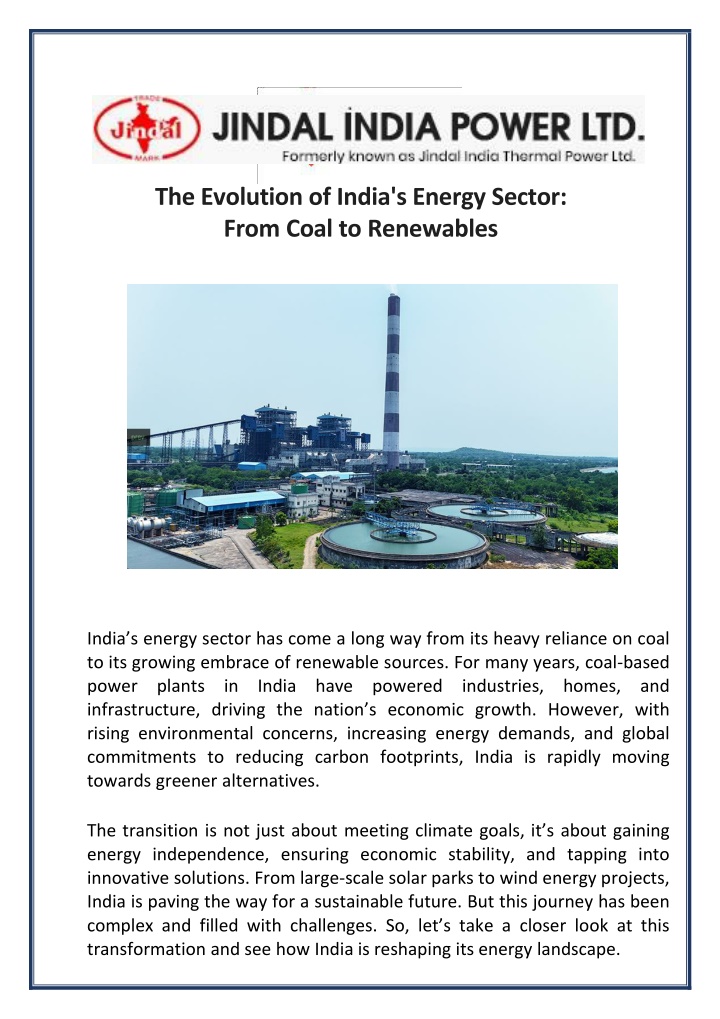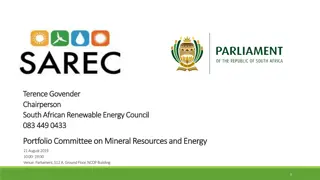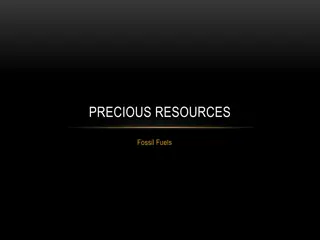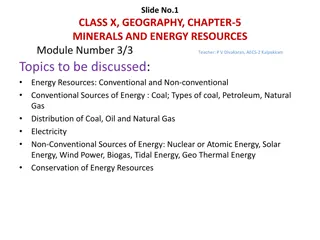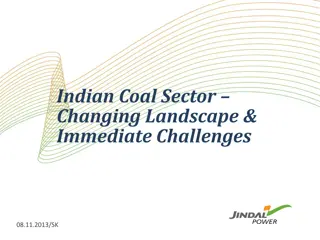The Evolution of India's Energy Sector From Coal to Renewables
ndia's energy sector is undergoing a remarkable transformationu2014from heavy reliance on coal to embracing renewable sources like solar and wind. With ambitious government targets, private sector investments, and technological advancements, the nat
Download Presentation

Please find below an Image/Link to download the presentation.
The content on the website is provided AS IS for your information and personal use only. It may not be sold, licensed, or shared on other websites without obtaining consent from the author.If you encounter any issues during the download, it is possible that the publisher has removed the file from their server.
You are allowed to download the files provided on this website for personal or commercial use, subject to the condition that they are used lawfully. All files are the property of their respective owners.
The content on the website is provided AS IS for your information and personal use only. It may not be sold, licensed, or shared on other websites without obtaining consent from the author.
E N D
Presentation Transcript
The Evolution of India's Energy Sector: From Coal to Renewables India s energy sector has come a long way from its heavy reliance on coal to its growing embrace of renewable sources. For many years, coal-based power plants in India have powered infrastructure, driving the nation s economic growth. However, with rising environmental concerns, increasing energy demands, and global commitments to reducing carbon footprints, India is rapidly moving towards greener alternatives. industries, homes, and The transition is not just about meeting climate goals, it s about gaining energy independence, ensuring economic stability, and tapping into innovative solutions. From large-scale solar parks to wind energy projects, India is paving the way for a sustainable future. But this journey has been complex and filled with challenges. So, let s take a closer look at this transformation and see how India is reshaping its energy landscape.
The Coal Era: Powering Growth at a Cost Coal has been a crucial part of India s energy landscape for many years. With its vast reserves, it has been the most readily available and affordable source of electricity. Large-scale power plants such as the Jindal India Power Plant in Odisha play a significant role in meeting the country s energy demands. While coal power is essential for economic growth, it also comes with environmental challenges. Burning coal releases high levels of carbon dioxide, sulfur dioxide, and other pollutants, contributing to air pollution and climate change. Additionally, coal mining has led to deforestation and displacement of local communities. Despite its economic advantages, the long-term environmental and health costs highlight the urgent need for India to pursue cleaner energy options. The Shift Towards Renewables Recognising the need for sustainable energy, India has made significant progress in adopting renewable energy sources. The government has set ambitious targets such as achieving 500 GW of non-fossil fuel capacity by 2030. Several factors have driven this shift: 1. Government Initiatives and Policies The Indian government has introduced policies like the National Solar Mission, which aims to make India a global leader in solar energy. Financial incentives, subsidies, and tax benefits have encouraged businesses and individuals to invest in renewable energy solutions. 2. Private Sector Participation Many private players have entered the renewable energy market. For instance, Jindal India Renewable Energy, a subsidiary of the BC Jindal Group, is actively investing in solar and wind projects to balance its portfolio. This shows how traditional energy companies are adapting to the changing landscape and supporting India's transition to cleaner energy sources.
3. Technological Advancements Innovations in solar panel efficiency, wind turbine technology, and battery storage have made renewable energy more viable. India has also invested in research and development to make these technologies cost-effective and scalable. Falling Costs of Renewables The costs associated with solar and wind energy have dropped significantly over the years, allowing them to compete with traditional coal power. As production increases, renewables are becoming even more affordable for consumers and businesses. The Role of Solar and Wind Energy India has made massive investments in solar energy. Wind energy is also expanding, particularly in states like Tamil Nadu and Gujarat, where high wind speeds make it an ideal location for wind farms. Companies like Jindal India Renewable Energy are actively investing in these sectors, bridging the gap between conventional and renewable energy The Future of India s Energy Sector India s energy landscape is experiencing a massive shift. While coal- based power plants in India still play a major role, the country is steadily moving towards a cleaner, more sustainable future. For instance, the BC Jindal Group, which operates a thermal power plant in India, is setting an example by diversifying into renewable energy through subsidiaries like Jindal India Renewable Energy. With continued investments, policy support, and technological advancements, India is on track to becoming a global leader in renewable energy. The journey is challenging, but the rewards a cleaner environment, energy independence, and economic growth make it worth the effort. Learn more at https://www.linkedin.com/pulse/evolution-indias-energy-sector-from- coal-renewables-aman-yadav-zwaqe
